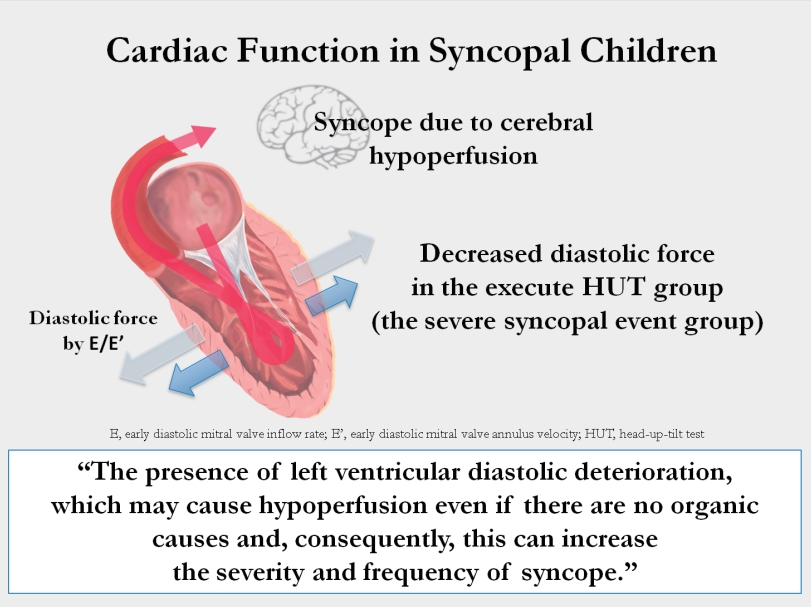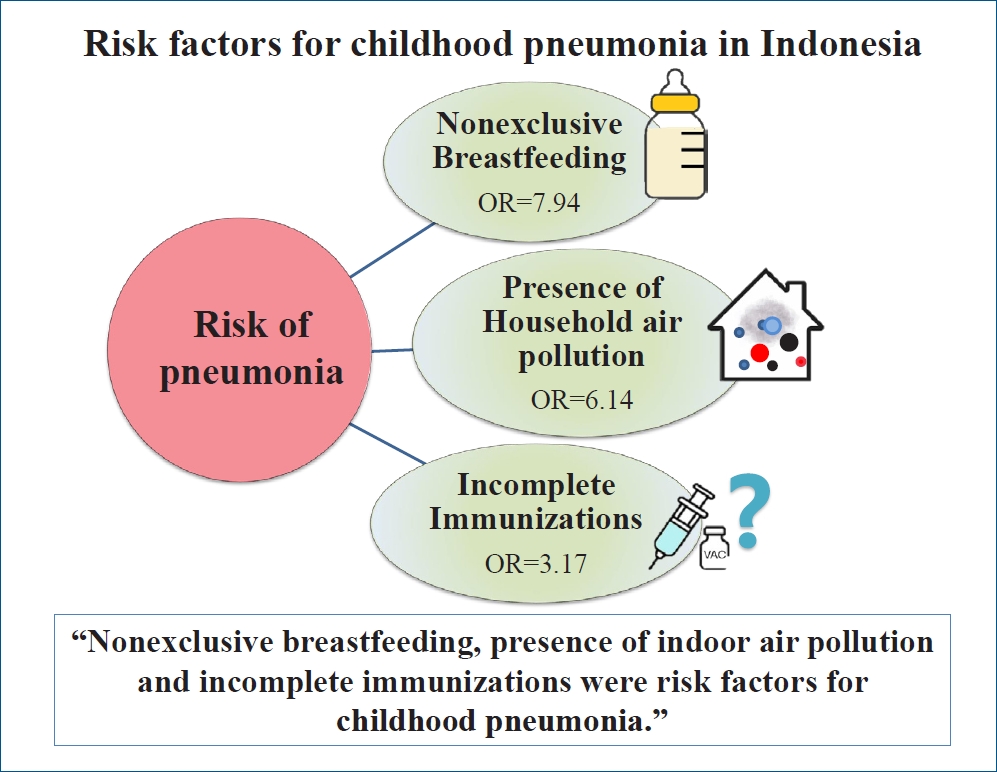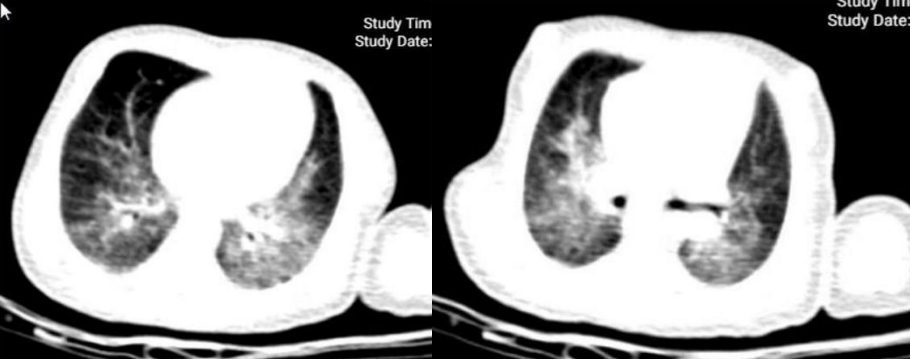- Review Articles
- Infection
- Effects of nasopharyngeal microbiota in respiratory infections and allergies
- Hyun Mi Kang, Jin Han Kang
- Clin Exp Pediatr. 2021;64(11):543-551. Published online April 15, 2021
-

· The nasal microbiota varies with age and is shaped by various factors in healthy individuals.
· The pathological condition of the respiratory tract appears to be associated with reduced nasal microbiota biodiversity, while dysbiosis is involved in the pathophysiology of many respiratory diseases, including otitis, sinusitis, allergic diseases, and lower respiratory infections.
- Nutrition
- Changes in health status of North Korean children and emerging health challenges of North Korean refugee children
- Seong-Woo Choi
- Clin Exp Pediatr. 2021;64(11):552-558. Published online May 17, 2021
-

· Among North Korean refugee (NKR) children under 5 years, 61% and 9.3% were underweight in 1998 and 2017, respectively.
· The immunization rate of NKR children exceeded 90% since 2006.
· For NKR children, protein-energy malnutrition was the #1 cause of death in 2009 versus #17 in 2019.
· In 2020, stunting affected 5.4% and 0.9% and obesity affected 10.7% and 2.7% of NKR versus South Korean children, respectively.
- Oncology
- Update on infantile hemangioma
- Hye Lim Jung
- Clin Exp Pediatr. 2021;64(11):559-572. Published online May 26, 2021
-

· Infantile hemangiomas (IHs) are the most common benign vascular tumors, occurring in 5%–10% of infants.
· IHs are characteristically not present at birth but are usually diagnosed at 1–4 weeks of age, rapidly proliferate until 5 months of age, and then spontaneously involute.
· High-risk IHs (10%) require early treatment from 1 month of age.
· Oral propranolol, a nonselective beta-blocker, is the first-line treatment for IHs.
- Editorial
- Oncology
- Infantile hemangioma: timely diagnosis and treatment
- Meerim Park
- Clin Exp Pediatr. 2021;64(11):573-574. Published online July 22, 2021
-

While the majority of infantile hemangiomas (IHs) do not require therapy and regress spontaneously, about 10%–15% develop complications such as ulceration, obstruction, or disfigurement. Early intervention is recommended for infants with potentially problematic IHs. Oral propranolol 2–3 mg/kg/day is currently the treatment of choice.
- Original articles
- Infection
- The global prevalence of Toxocara spp. in pediatrics: a systematic review and meta-analysis
- Behnam Abedi, Mehran Akbari, Sahar KhodaShenas, Alireza Tabibzadeh, Ali Abedi, Reza Ghasemikhah, Marzieh Soheili, Shnoo Bayazidi, Yousef Moradi
- Clin Exp Pediatr. 2021;64(11):575-581. Published online February 5, 2021
-

Is the global prevalence of toxocariasis high among children? The prevalence of toxocariasis is high in pediatric patients. Asian children are more susceptible to the disease than other children. Its virulence varies among different socioeconomic classes in various countries. Hand washing after soil contact, routine pet deworming, and appropriate disposal of pet feces in households with Asian pediatrics are needed to prevent toxocariasis.
- Original Articles
- Cardiology
- Assessment of cardiac function in syncopal children without organic causes
- Heoungjin Kim, Lucy Youngmin Eun
- Clin Exp Pediatr. 2021;64(11):582-587. Published online March 10, 2021
-

Question: Does a subtle deterioration in cardiac function affect the severity of syncope in patients without underlying disease?
Finding: For syncope patients with reasonable cardiac function but without underlying disease, tissue Doppler imaging (TDI) measurements helped reveal subtle differences in cardiac function with syncope and predicted the severity of syncope or a potential recurrent event.
Meaning: TDI measurements might be a useful indicator for predicting the severity of syncope.
- General Pediatrics
- Risk factors for childhood pneumonia: a case-control study in a high prevalence area in Indonesia
- Vivi Ninda Sutriana, Mei Neni Sitaresmi, Abdul Wahab
- Clin Exp Pediatr. 2021;64(11):588-595. Published online March 15, 2021
-

Question: Is the incidence of childhood pneumonia influenced by breastfeeding and basic immunization status?
Finding: Exclusive breastfeeding and complete basic immunization status have an effect in limiting the incidence of childhood pneumonia.
Meaning: While exclusive breastfeeding and complete basic immunization the Expanded Program on Immunization status are important factors for reducing the incidence of childhood pneumonia, indoor air pollution was also a significant risk factor.
- Clinical Note
- Infection
- A neonate infected with coronavirus disease 2019 with severe symptoms suggestive of multisystem inflammatory syndrome in childhood
- Fatemeh Eghbalian, Ghazal Sami, Saeid Bashirian, Ensiyeh Jenabi
- Clin Exp Pediatr. 2021;64(11):596-598. Published online September 10, 2021
-

Question: Can multisystem inflammatory syndrome in childhood (MIS-C) occur in the neonate associated with coronavirus disease 2019 (COVID-19)?
Finding: A 9-day-old neonate infected with COVID-19 had fever, respiratory distress, and gastrointestinal symptoms suggestive of MIS-C. This neonate recovered after treatment with intravenous immunoglobulin (IVIG).
Meaning: IVIG successfully treated a rare case of a 9-day-old neonate with COVID-19 and severe symptoms suggestive of MIS-C.
- Letter to the Editor
- Infection
- Multisystem inflammatory syndrome in children and Kawasaki disease in infants: 2 sides of the same coin?
- Hing Cheong Kok, Dinesh Nair, Ke Juin Wong, Siew Moy Fong
- Clin Exp Pediatr. 2021;64(11):599-601. Published online October 7, 2021
-
Question: Are multisystem inflammatory syndrome in children (MIS-C) and Kawasaki disease (KD) in infants, 2 sides of the same coin?
Finding: Here we report on a 4-month-old girl with MIS-C and signs of KD with shock. Most (83%) infants with MIS-C had features of KD, especially KD shock syndrome.
Meaning: MIS-C is similar to KD, and likely is a consequence of dysregulated immune responses secondary to sudden acute respiratory syndrome coronavirus 2 infection.












